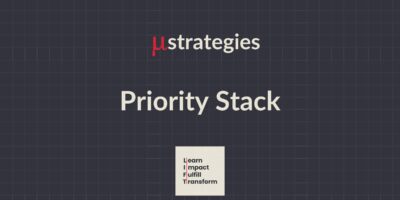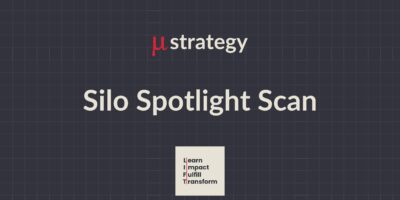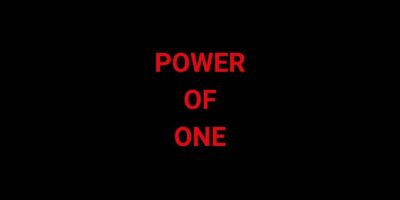Decades later, Peter Drucker’s wisdom still resonates, especially in the context of transformation.
He famously said, “Culture eats strategy for breakfast.”
Over nine essays, we’ve explored the PPPP-III Framework, unpacking Product, Platform, Persona, Process, Instruments, Insights, Investments, and Barriers.
This final essay focuses on the most critical, yet often overlooked, element: Transformation Metabolism (TM) – the speed and effectiveness with which an organization adopts, builds, and adapts to change.
If strategy is the brain and execution is the body, TM is the heartbeat – unrelenting, adaptive, and essential for survival. Organizations with high TM don’t just keep pace with disruption; they use it as a competitive advantage. For others, poor TM is the invisible weight that slows everything down.
The question is: What’s your organization’s TM score, and how can you raise it?
Transformation Metabolism is a Formula for Growth
At its core, TM measures how quickly and effectively your organization can respond to challenges, leverage opportunities, and sustain innovation. It hinges on four interdependent factors or levers:
-
Product Velocity (PV): The ability to ideate, develop, and deliver high-quality offerings quickly.
-
Process Absorption & Discipline (PrD): The rigor with which workflows are standardized, improved, and scaled.
-
Platform Capability (PltC): The adaptability and scalability of core systems and infrastructure.
-
Persona Satisfaction (PerSat): The alignment of stakeholder experiences with organizational objectives.
When these variables work in harmony, TM becomes a multiplier, enhancing every aspect of your operations.
The Formula: TM = fn (PV, PrD, PltC, PerSat)
If your platform lacks scalability, product velocity suffers. If processes aren’t disciplined, personas become dissatisfied. TM connects these dots, making it both measurable and actionable.
Sure – but Where to Start?
Transformation Metabolism isn’t a one-size-fits-all concept. Organizations vary in size, complexity, and industry focus. However, any leader can improve TM by targeting three fundamental patterns I have personally focused on: Mission Clarity, Pace, and Focus.
1. Mission Clarity: Write the Playbook
Transformation stalls without clarity. Employees need to know the “why” behind change and how their roles fit into the larger picture. I find that Amazon’s narrative memos, which require leaders to articulate goals with precision, offer a blueprint and are an excellent tool for leaders to refine their own intent and focus. These documents force rigorous thinking and alignment before execution even begins.
Take Action:
-
Write transformation charters for every major initiative, modeled after Amazon memos. Include purpose, objectives, measurable outcomes, and accountability.
-
Use quarterly town halls to reinforce alignment, with live Q&A to address gaps in understanding.
-
Commit and Measure. Example, OKR: “By Q2, 100% of transformation projects will have approved charters and quarterly progress reviews.”
2. Pace: Embed Disciplined Agility
Moving faster isn’t just about speed – it’s about consistent delivery. DBS Group mastered this through disciplined agile processes, embedding accountability, transparency, and iterative improvement across teams.
Take Action:
-
Implement sprint metrics like velocity, throughput, and cycle time. Reward teams for completing >90% of planned sprints on schedule.
-
Use retrospectives to identify bottlenecks, creating a culture of continuous improvement.
-
Commit and Measure. Example, OKR: “Reduce cycle time for feature releases by 15% within six months through streamlined workflows and automation.”
3. Focus: Adopt Data-Driven Decisions
Focus ensures resources go to initiatives that truly move the needle. Companies like Amazon and Reliance Jio achieve this by building systems that feed real-time insights directly into decision-making processes, allowing for rapid iteration and course correction.
Take Action:
-
Deploy real-time dashboards for product, platform, and persona metrics, with bi-weekly/ monthly leader reviews.
-
Develop a culture of experimentation by funding small, fast tests that inform larger investments.
-
Commit and Measure. Example, OKR: “Run 10 small-scale pilot projects in Q1, with 70% resulting in actionable insights or adjustments to strategy.”
Build Organizational Resilience
Improving TM requires more than leadership mandates – it demands systemic resilience. Two proven strategies I have used include:
1. Institutionalize Slack
Slack is an organization-wide breathing room. Teams at companies like 3M, Google, and Atlassian allocate 15–20% of their time to exploratory projects, allowing for breakthrough innovations – several of which make it into revenue-earning products and many that enhance organization capability. It’s a lot like research and development in every aspect of the business – at scale.
Take Action:
-
Dedicate unstructured time for experimentation. Measure the pipeline of ideas generated and implemented annually.
-
Create a fund specifically for team-driven experiments. For example, consider allocating something meaningful like 1-1.5% of revenue.
2. Scale Psychological Safety
Psychological safety enables bold thinking. At Google, this principle underpins team dynamics, ensuring employees feel safe to voice ideas and learn from failure. The security to contribute enhances creative contribution and enhances informed risk-taking.
Take Action:
-
Conduct quarterly surveys to measure trust and safety within teams. Use findings to coach leaders.
-
Establish an “Annual Failure Report,” celebrating lessons learned from risk-taking.
Connect Culture and Metrics
It’s impossible to discuss TM without addressing culture. A high-TM culture aligns purpose with metrics, enabling organizations to move with a dual objective of speed and precision. Let’s translate this into actionable steps across the four TM dimensions:
Product Velocity (PV):
-
Benchmark average time-to-market across product teams, setting improvement targets annually or more often.
-
Use innovation labs to accelerate ideation cycles for new features.
-
Commit and Measure. Sample Metric: Time-to-market reduced by 20% year-over-year.
Process Absorption & Discipline (PrD):
-
Invest in cross-training, monitoring, and assurance so workflows can scale without bottlenecks.
-
Standardize reporting formats for project updates to ensure clarity and accountability.
-
Commit and Measure. Sample Metric: Internal process defect rate decreased by 30% within 12 months.
Platform Capability (PltC):
-
Conduct semi-annual stress tests to identify infrastructure, services, and persona-experience weaknesses.
-
Incentivize engineering teams to expand use cases and onboard internal/ external personas, expanding platform utility.
-
Commit and Measure. Sample Metric: API utilization increased by 50% in the next fiscal year.
Persona Satisfaction (PerSat):
-
Launch bi-annual Persona (customer and employee) satisfaction surveys, linking findings to actionable changes.
-
Use sentiment analysis on feedback to refine product and service roadmaps.
-
Commit and Measure. Sample Metric: Net Promoter Score (NPS) increased by 15 points within 18 months.
Get Going with Transformation Metabolism
As we conclude this 10-essay, 10-week PPPP-III Framework series, the throughline is clear: transformation doesn’t happen in silos. Every element – Product, Platform, Persona, Process, and beyond – depends on and contributes to the strength of your Transformation Metabolism.
But this final essay isn’t an endpoint; it’s a starting point. Here are three paths you can take to ensure your organization’s TM remains high:
1. Assess Your Current State:
Conduct a TM diagnostic across your organization. Score yourself on PV, PrD, PltC, and PerSat, and identify weaknesses.
2. Prioritize One Lever:
Focus on the area with the biggest bottleneck. For instance, if your platform is slowing innovation, invest in infrastructure upgrades to enable more experimentation.
3. Set Ambitious OKRs:
Use the OKR examples provided here as a template to create your own. Share them with your teams, track them rigorously, and celebrate progress.
Reflect
Transformation isn’t a singular event; it’s a continuous process of growth, adaptation, and learning. As you reflect on your organization’s journey through the PPPP-III Framework, ask yourself:
Are you fostering a culture of clarity, pace, and focus?
Do your systems enable your teams to thrive, even amidst uncertainty?
Most importantly, are you willing to measure, adapt, and improve?
The future belongs to those with high Transformation Metabolism. Start building your business muscle today.
And remember we are all just doing our best ~ Assume Positive Intent.
Let me know how I can help.
Adi








Comments